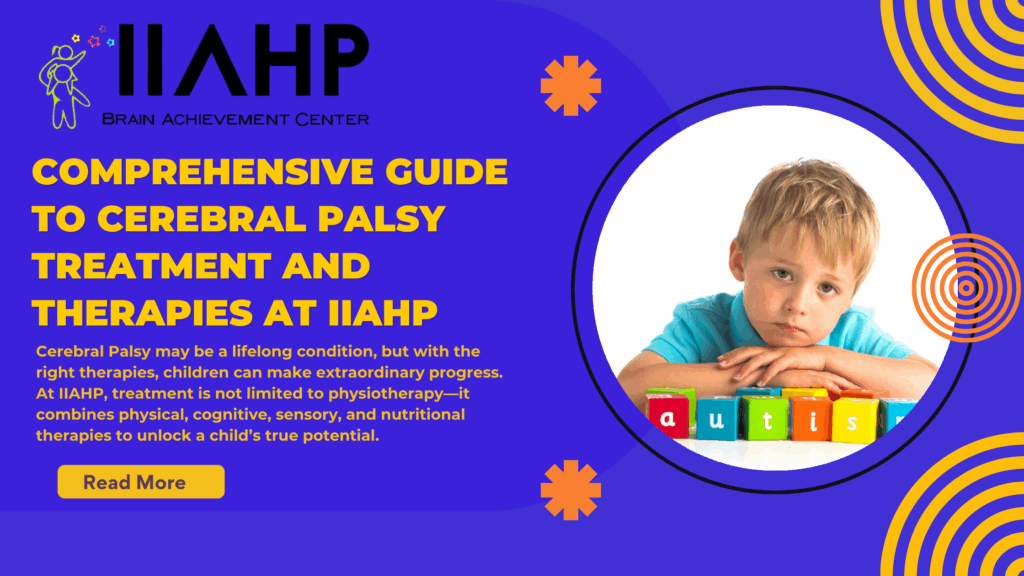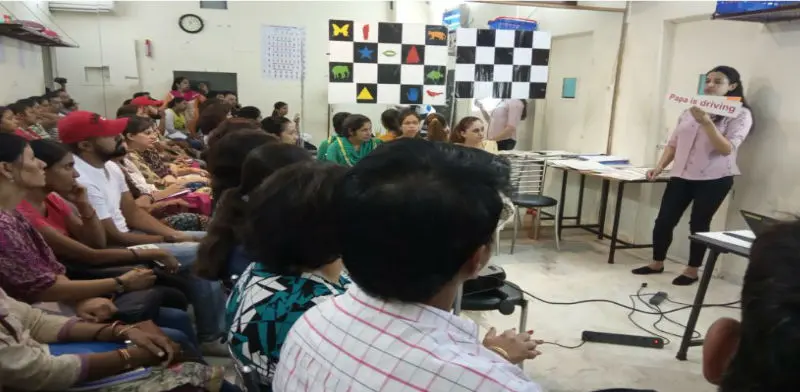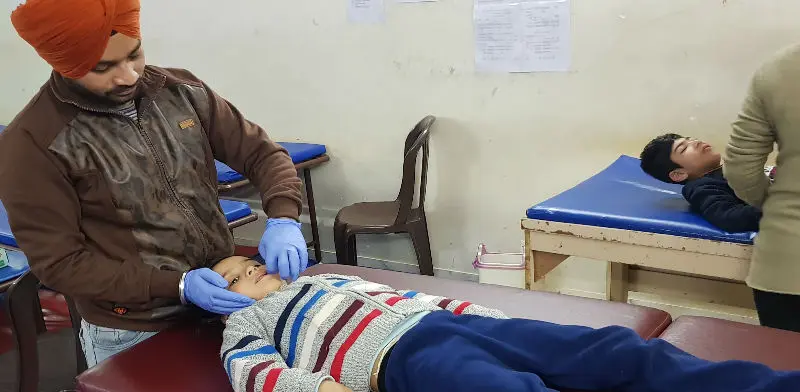Cerebral Palsy (CP) is one of the most common neurodevelopmental disorders in children. It affects movement, posture, coordination, and sometimes speech and cognition. Parents often feel overwhelmed after a CP diagnosis. Still, the good news is that with the right therapies and early intervention, children can achieve remarkable progress in mobility, independence, and learning.At the IIAHP, treatment for Cerebral Palsy is not limited to physiotherapy alone. Instead, IIAHP follows a multi-therapy model that addresses the child’s physical, cognitive, sensory, and communication needs. This holistic approach ensures better results by stimulating brain plasticity and helping children acquire new skills in a step-by-step manner.
Understanding Cerebral Palsy
Cerebral Palsy is caused by damage or abnormal development of the brain, often before or shortly after birth. Its effects vary in severity, but common symptoms include:
- Difficulty in movement and muscle coordination
- Stiff or floppy muscle tone
- Delayed motor milestones (crawling, walking)
- Speech and communication difficulties
- Challenges in balance and coordination
- Associated conditions like seizures or learning difficulties
While CP cannot be “cured,” comprehensive treatment programs can help children maximize their potential and live more independently.
IIAHP’s Holistic Approach to Cerebral Palsy Treatment
At IIAHP, treatment for Cerebral Palsy is tailored to each child’s unique needs. The programs combine physical therapies with cognitive, sensory, and nutritional support. Parents are also trained to continue therapies at home, ensuring consistent improvement.
Therapies for Cerebral Palsy at IIAHP
Here’s a list of therapies that form part of IIAHP’s Cerebral Palsy treatment program:
Physiotherapy
- Core therapy for improving strength, flexibility, and mobility.
- Helps reduce spasticity and improve posture.
- Focuses on walking, sitting, balance, and motor control.
Occupational Therapy
- Improves daily living skills like dressing, feeding, and writing.
- Enhances fine motor control and independence.
Reflex Integration Program
- Targets retained primitive reflexes that interfere with motor control.
- Improves coordination and movement patterns.
Neurodevelopmental Therapy (NDT)
- Retrains the brain through guided movement and positioning.
- Builds new motor pathways for better control.
Balance Board Exercises & Brain Gym
- Improves body balance, muscle coordination, and rhythm.
- Enhances cross-brain communication for motor planning.
Sensory Integration Therapy
- Uses rhythm, melody, and song to stimulate speech.
- Helps children practice sounds and words in a fun, engaging way.
Speech and Language Therapy
- Helps children with speech difficulties caused by CP.
- Improves articulation, breathing, and communication skills
Euro-Structural Therapy
- Corrects body alignment and supports better posture.
- Enhances walking and sitting stability.
Respiratory Patterning Therapy
- Improves breathing control, essential for movement and speech.
- Helps build stamina and energy.
Prism Therapy
- Enhances vision, spatial awareness, and attention.
- Improves coordination and body orientation
Benefits of the Multi-Therapy Approach for CP
The integrated therapy model at IIAHP helps children with Cerebral Palsy achieve:
- Improved mobility and reduced stiffness
- Greater independence in daily tasks
- Enhanced speech and communication
- Better posture, balance, and coordination
- Increased confidence and social interaction
- Academic readiness and improved learning capacity
Conclusion
Cerebral Palsy may be a lifelong condition, but with the right therapies, children can make extraordinary progress. At IIAHP, treatment is not limited to physiotherapy—it combines physical, cognitive, sensory, and nutritional therapies to unlock a child’s true potential.






